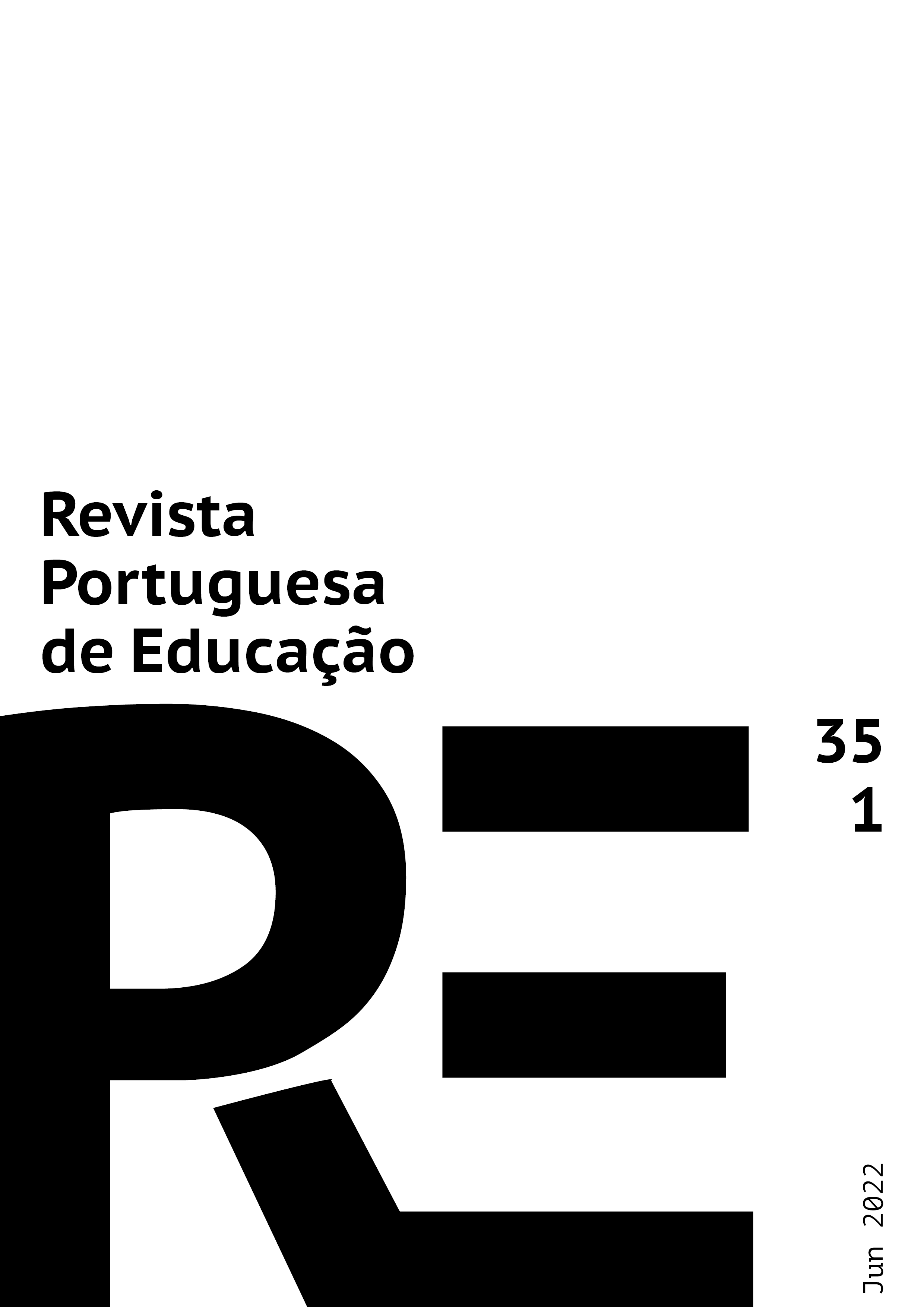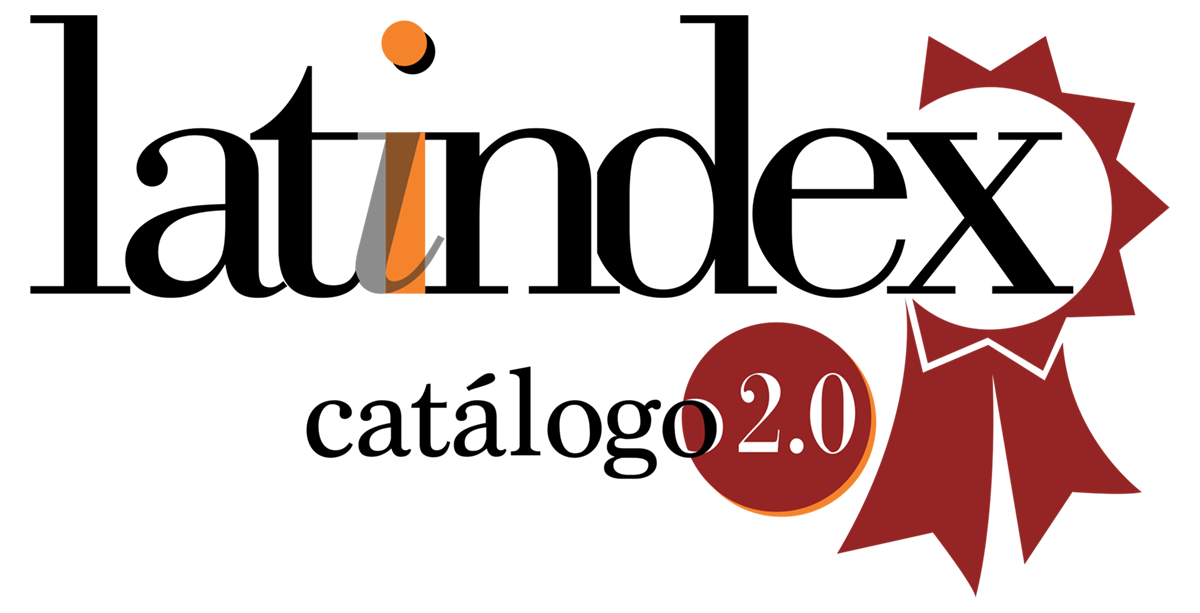La perception des professeurs concernant l’impact du bégaiement au quotidien de leurs élèves bégues
DOI :
https://doi.org/10.21814/rpe.18383Mots-clés :
Bégaiement, Perception des professeurs, Enfants en age scolaire, Qualité de vieRésumé
Le bégaiement est un trouble neurodéveloppemental qui affecte la parole. La manière dont les autres perçoivent le bégaiement et réagissent à ce trouble peut influencer la façon dont les enfants perçoivent leur bégaiement. Les enfants ont la plus part de leurs expériences sociales à l'école. Et pour les enfants bègues la communication peut être difficile. Alors c’est essentiel de connaître la perception des professeurs vis-à-vis du bégaiement. Pour cette étude, nous avons assemblé des donnés concernant la perception des professeurs sur l'impact du bégaiement pour les élèves portugais, au moyen d'une adaptation de la version portugaise de l'instrument: Évaluation Global de l’Expérience du Bégaiement par l'Individu (OASES-S). Le nombre de participants à l’étude était de 27 professeurs et leurs élèves bègues (n=27 ; age moyen = 9,0 d=1,8) ont été évalué dans plusieurs écoles du Portugal. De manière générale, les professeurs perçoivent l'impact du bégaiement dans la vie scolaire de l’élève comme étant : légère ou modéré. Des différences statistiques significatives n'ont pas été vérifié entre la perception des professeurs sur l'impact du bégaiement et l'autoperception des élèves. Cependant, il n'y a pas de corrélation entre les évaluations sur l'impact des élèves et celles des professeurs. Ces derniers n'ont pas répondu à tous les items du questionnaire ce qui indique que les professeurs sont peu familiarisés avec certains aspects en rapport avec l'expérience des enfants et le bégaiement, cela démontre le besoin d'une meilleur intégration des professeurs dans les programmes thérapeutiques de manière à améliorer le soutien apporté aux enfants bègues.
Téléchargements
Références
Al-Awad, A, & Sonuga-Barke, E. (2002). The application of the Conners’ Rating Scales to a Sudanese sample: An analysis of parents’ and teachers’ ratings of childhood behaviour problems. Psychology and Psychotherapy: Theory, Research and Practice, 75(2), 177–187. https://doi.org/10.1348/147608302169634
Ambrose, N. G., & Yairi, E. (1999). Normative Disfluency Data for Early Childhood Stuttering. Journal of Speech, Language, and Hearing Research, 42(4), 895–909.
Beilby, J. M., Byrnes, M. L., & Yaruss, J. S. (2012). The impact of a stuttering disorder on Western Australian children and adolescents. Perspectives on Fluency and Fluency Disorders, 22(2), 51. https://doi.org/10.1044/ffd22.2.51
Bloodstein, O., Bernstein Ratner, N. & Brundage, S. B. (2021). A Handbook on stuttering (7th ed). Plural Publishing.
Blood, G. W., Boyle, M. P., Blood, I. M., & Nalesnik, G. R. (2010). Bullying in children who stutter: Speech-language pathologists’ perceptions and intervention strategies. Journal of Fluency Disorders, 35(2), 92–109. https://doi.org/10.1016/j.jfludis.2010.03.003
Boey, R. (2012). Essentials of Epidemiology and Phenomenology of Stuttering – Consequences for Clinical SLP Practice. Logopedija, 3(1), 1–11.
Boey, R., Van de Heyning, P. H., Wuyts, F. L., Heylen, L., Stoop, R., & De Bodt, M. S. (2009). Awareness and reactions of young stuttering children aged 2–7 years old towards their speech disfluency. Journal of Communication Disorders, 42(5), 334–346. https://doi.org/10.1016/j.jcomdis.2009.03.002
Bothe, A. K., & Richardson, J. D. (2011). Statistical, Practical, Clinical, and Personal Significance: Definitions and Applications in Speech-Language Pathology. American Journal of Speech-Language Pathology, 20(3), 233–242. https://doi.org/10.1044/1058-0360(2011/10-0034)
Carroll, C. (2010). "It's not everyday that parents get a chance to talk like this": Exploring parents ’ perceptions and expectations of speech-language pathology services for children with intellectual disability. International Journal of Speech-Language Pathology, 12(4), 352–361. https://doi.org/10.3109/17549500903312107
Conture, E. G. (2001). Stuttering: Its Nature, Diagnosis, and Treatment. Allyn and Bacon.
Cooke, K., & Millard, S. (2018). The Most Important Therapy Outcomes for School-Aged Children Who Stutter: An Exploratory Study. American Journal of Speech-Language Pathology, 27(October), 1152–1163.
Craig, A., Blumgart, E., & Tran, Y. (2009). The impact of stuttering on the quality of life in adults who stutter. Journal of Fluency Disorders, 34(2), 61–71. https://doi.org/10.1016/j.jfludis.2009.05.002
Daniels, D. E., Gabel, R. M., & Hughes, S. (2012). Recounting the K-12 school experiences of adults who stutter: A qualitative analysis. Journal of Fluency Disorders, 37(2), 71–82. https://doi.org/10.1016/j.jfludis.2011.12.001
Dorsey, M., & Guenther, R. K. (2000). Attitudes of professors and students toward college students who stutter. Journal of Fluency Disorders, 25(1), 77–83. https://doi.org/10.1016/S0094-730X(99)00026-1
Firmin, M. W., Proemmel, E., & Hwang, C. (2000). A Comparison of Parent and Teacher Ratings of Children’s Behaviors. Educational Research Quarterly, 29(2), 18–28.
Guimarães, I. (2007). A ciência e a arte da voz humana. Alcabideche: Escola Superior de Saúde de Alcoitão.
Guimarães, I., & Abberton, E. (2005). Fundamental frequency in speakers of Portuguese for different voice samples. Journal of Voice, 19(4), 592–606. https://doi.org/10.1016/j.jvoice.2004.11.004
Guttormsen, L. S., Kefalianos, E., & Næss, K.-A. B. (2015). Communication attitudes in children who stutter: A meta-analytic review. Journal of Fluency Disorders, 46, 1–14. https://doi.org/10.1016/j.jfludis.2015.08.001
Harlen, W. (2005). Trusting teachers’ judgement: research evidence of the reliability and validity of teachers’ assessment used for summative purposes. Research Papers in Education, 20(3), 245–270. https://doi.org/10.1080/02671520500193744
Hayhow, R., Cray, A. M., & Enderby, P. (2002). Stammering and therapy views of people who stammer. Journal of Fluency Disorders, 27(1), 1–17. https://doi.org/10.1016/S0094-730X(01)00102-4
Howard, C. (2013). Behavioral Stuttering Interventions for Children and Adolescents: A Systematic Review and Meta-Analysis. Journal of Speech, Language, and Hearing Research, 56, 921–933. https://doi.org/10.1044/1092-4388(2012/12-0036)
Klompas, M., & Ross, E. (2004). Life experiences of people who stutter, and the perceived impact of stuttering on quality of life: Personal accounts of South African individuals. Journal of Fluency Disorders, 29(4), 275–305. https://doi.org/10.1016/j.jfludis.2004.10.001
Langevin, M., Packman, A., & Onslow, M. (2010). Parent perceptions of the impact of stuttering on their preschoolers and themselves. Journal of Communication Disorders, 43(5), 407–423. https://doi.org/10.1016/j.jcomdis.2010.05.003
Li, J., & Arnold, H. S. (2015). Reactions of teachers versus non-teachers toward people who stutter. Journal of Communication Disorders, 56, 8–18. https://doi.org/10.1016/j.jcomdis.2015.05.003
Marôco, J. (2010). Análise Estatística - Com Utilização do SPSS (3ª Ed.). Edições Sílabo.
Miller, C. (1999). Teachers and speech and language therapists: a shared framework. Nasen Journals, 26(3), 141–146. https://doi.org/10.1111/1467-8527.t01-1-00126
Moon, K. R., Chung, S. M., Park, H. S., & Kim, H. S. (2012). Materials of Acoustic Analysis: Sustained Vowel Versus Sentence. Journal of Voice, 26(5), 563–565. https://doi.org/10.1016/j.jvoice.2011.09.007
Murphy, W. P., Yaruss, J. S., & Quesal, R. W. (2007). Enhancing treatment for school-age children who stutter. I. Reducing negative reactions through desensitization and cognitive restructuring. Journal of Fluency Disorders, 32(2), 121–138. https://doi.org/10.1016/j.jfludis.2007.02.002
Pros, R. C., Tarrida, A. C., Muntada, M. C., & Martin, M. B. (2017). Horarios laborales de los progenitores y su incidencia en el rendimiento académico de alumnos de primaria. Efectos diferenciales del género. Revista Portuguesa de Educação, 30(1), 135. https://doi.org/10.21814/rpe.9512
Reardon-Reeves, N., & Yaruss, J. S. (2013). School-age stuttering therapy: A practical guide. Stuttering Therapy Resources, Inc.
Reardon- Reeves, N., & Yaruss, J.S. (2015). School-age stuttering: How teachers can help. Stuttering Therapy Resources, Inc.
Riley, G. (2009). The Stuttering Severity Instrument for Adults and Children (SSI-4) (4th ed.). PRO-ED.
Rocha, M., Rato, J. R., Yaruss, J.S. (2020). The impact of stuttering on Portuguese school-age children as measured by the OASES-S. Speech, Language and Hearing, 24(1), 38-47. https://doi.org/10.1080/2050571X.2020.1751427
Rocha, M. S., Yaruss, J. S., & Rato, J. R. (2019a). Gaguez na Criança - Atualização da Revisão de Literatura. Cadernos De Saúde, 11(2), 12-20. https://doi.org/10.34632/cadernosdesaude.2019.5950
Rocha, M. S., Yaruss J. S. & Rato, J. R. (2019b). Temperament, Executive Functioning, and Anxiety in School-Age Children Who Stutter. Frontiers in Psychology, 10. https://doi.org/10.3389/fpsyg.2019.02244
Rocha, M. S., Yaruss J. S. & Rato, J. R. (2019c). Stuttering Impact: A Shared Perception for Parents and Children? Folia Phoniatrica et Logopaedica, 72(9), 1–9. https://doi.org/10.1159/000504221
Schatz, A. M., Ballantyne, A. O., & Trauner, D. A. (2001). Sensitivity and Specificity of a Computerized Test of Attention in the Diagnosis of Attention-Deficit/Hyperactivity Disorder. Assessment, 8(4), 357–365. https://doi.org/10.1177/107319110100800401
Seixas, A. M., Matos, A., Festas, M. I., & Fernandes, P. (2014). Os Tempos na Escola: estudo comparativo da carga horária em Portugal e noutros países. Lisboa: Fundação Francisco Manuel dos Santos.
Silva, L. K., Martins-Reis, V. de O., Maciel, T. M., Ribeiro, J. K. B. C., Souza, M. A. de, & Chaves, F. G. (2016). Gagueira na escola: efeito de um programa de formação docente em gagueira. CoDAS, 28(3), 261–268. https://doi.org/10.1590/2317-1782/20162015158
Silvestre, I. (2009). Avaliação Acústico-Perceptiva e Stress em Mulheres com Patologia Laríngea Inês dos Reis Silvestre Avaliação Acústico-Perceptiva e Stress em Mulheres com Patologia Laríngea. Universidade de Aveiro.
Smith, A., & Weber, C. (2017). How Stuttering Develops: The Multifactorial Dynamic Pathways Theory. Journal of Speech Language and Hearing Research, 60(9), 2483–2505. https://doi.org/10.1044/2017_JSLHR-S-16-0343
Tichenor, S., & Yaruss, J.S. (2019). Stuttering as defined by adults who stutter. Journal of Speech, Language, and Hearing Research, 62(12), 4356-4369. https://doi.org/10.1044/2019_JSLHR-19-00137
Turnbull, J. (2006). Promoting greater understanding in peers of children who stammer. Emotional and Behavioural Difficulties, 11(4), 237–247. https://doi.org/10.1080/13632750601022139
Ulloa, R. E., Narváez, M. R., Arroyo, E., del Bosque, J., & de la Peña, F. (2009). Estudio de validez del cuestionario para trastorno por déficit de atención y trastorno de conducta. Actas Espanolas de Psiquiatria, 37(3), 153–157.
Yaruss, J. S., Coleman, C. E., & Quesal, R. W. (2012). Stuttering in School-Age Children: A Comprehensive Approach to Treatment. Language, Speech, and Hearing Services in Schools, 43(4), 536–548. https://doi.org/10.1044/0161-1461(2012/11-0044)
Yaruss, J. S., & Quesal, R. W. (2004). Stuttering and the International Classification of Functioning, Disability, and Health (ICF): An update. Journal of Communication Disorders, 37(1), 35–52. https://doi.org/10.1016/S0021-9924(03)00052-2
Yaruss, J. S., & Quesal, R. W. (2006). Overall Assessment of the Speaker’s Experience of Stuttering (OASES): Documenting multiple outcomes in stuttering treatment. Journal of Fluency Disorders, 31(2), 90–115. https://doi.org/10.1016/j.jfludis.2006.02.002
Yaruss, J. S., & Quesal, R. W. (2016). Overall Assessment of the Speaker’s Experience of Stuttering (OASES). McKinney, TX: Stuttering Therapy Resources, Inc.
Téléchargements
Publiée
Comment citer
Numéro
Rubrique
Licence
© Portuguese Journal of Education 2022

Ce travail est disponible sous licence Creative Commons Attribution - Partage dans les Mêmes Conditions 4.0 International.
1. Autores conservam os direitos de autor e concedem à revista o direito de primeira publicação, com o trabalho simultaneamente licenciado sob a Licença Creative Commons Attribution 4.0 CC-BY-SA que permite a partilha do trabalho com reconhecimento da autoria e publicação inicial nesta revista;
2. Autores e autoras têm autorização para assumir contratos adicionais separadamente para distribuição não-exclusiva da versão do trabalho publicada nesta revista (ex.: depositar em repositório institucional ou como capítulo de livro), com reconhecimento de autoria e publicação inicial nesta revista;
3. Autores e autoras têm permissão e são estimulado/as a publicar e distribuir o seu trabalho online (ex.: em repositórios institucionais ou na sua página pessoal), já que isso pode aumentar o impacto e a citação do trabalho publicado (Veja O Efeito do Acesso Livre).
Esta obra está licenciada sob uma Licença Creative Commons - Atribuição Compartilhamento pela mesma Licença Internacional 4.0




















